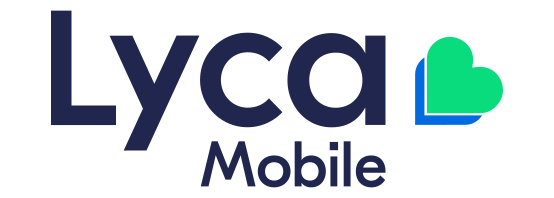Stop the Revolving Door: Practical Strategies for Retaining Your Best People
Retaining top talent is more crucial than ever for Australian businesses. With the evolving expectations of the workforce and the constant threat of competitors poaching your best employees, you might be wondering how to increase employee retention. That’s where a strategic approach to employee retention is essential.
Fortunately, there are plenty of proven strategies that you can implement to create a work environment that fosters loyalty and minimises turnover. These include building a positive work environment, offering competitive benefits packages, actively engaging employees in meaningful ways, and demonstrating strong leadership.
Why Are Your Employees Leaving?
Employees can exit a business for any number of reasons, but often a desire for better compensation, clearer paths for career progression, and a healthy work-life balance come out on top. Dissatisfaction with leadership or a negative company culture can also be significant drivers of employee turnover.
Given that Australian job seekers in particular are highly mobile, with research from SEEK indicating that 37% were considering a move within the last 6 months of 2023, it’s important to create a work environment that prioritises competitive remuneration, professional development opportunities, well-being initiatives, and strong leadership.
Quiet Quitting
A common result of dissatisfaction in the workplace is a phenomenon that’s emerged over the last couple of years called ‘quiet quitting.’ Quiet quitting refers to employees who stick to their core job duties but withdraw from going above and beyond. They limit their efforts at work, consciously avoiding extra tasks that exceed their defined responsibilities.
This shift often stems from feelings of being underappreciated, undercompensated, or burnt out. As workers seek better work-life balance and mental health, many are opting to ‘quietly quit’ rather than overextend themselves or leave their positions outright. This trend underscores the importance for employers to foster supportive and engaging workplaces.
How Do You Retain Employees? Talent Retention Strategies that Work
According to our recent Job Satisfaction and Wage Trends Report, what matters most to employees are their salary and benefits, their ability to make a positive impact, and achieving a good work-life balance.
We also discovered that employee retention is closely linked to job satisfaction—those who express their love for their job are overwhelmingly more likely to have been in their role for three to five years, while those ready to quit usually want to leave sooner than that.
To significantly reduce employee turnover and retain top talent in your business, here are some of the most successful retention strategies to try.
Create a Positive Work Culture
The foundation of employee retention is undoubtedly a positive work environment. This encompasses not just the physical space but also the culture, the values, and the way people interact within an organisation. A positive work environment is characterised by mutual respect, open communication, and a sense of belonging.
You can create a positive work culture by:
Encouraging Open Communication
Create channels for open dialogue to ensure employees feel heard and valued. This could be through regular town halls, anonymous feedback systems, or open-door policies with management.
Promoting Work-Life Balance
Show understanding and flexibility towards employees’ needs outside of work. A recent report from the University of Melbourne found that 75% of employees under the age of 54 reported that they would leave a job that didn’t allow for flexibility. Flexible working hours, the option to work remotely, and mental health days are examples of practices that contribute to a supportive work environment.
Recognising and Rewarding Contributions
Make sure employees feel appreciated for their hard work and achievements. Recognition programs, whether through awards, bonuses, or simple shout-outs in team meetings, can boost morale and loyalty.
Offer Competitive Benefits
To attract and retain top talent, offering competitive benefits is key. However, competitive does not only refer to salary. While fair and attractive compensation is essential, today's employees look for benefits that enhance their quality of life and offer security for their future.
Consider offering some of the below to increase talent retention:
Tailored Benefits Packages
Employees have diverse needs, and that’s why you should be tailoring your benefits packages to suit different life stages and priorities—from health insurance and superannuation to childcare support and education allowances.
Professional Development Opportunities
Investing in your employees’ growth not only benefits them, but it also benefits your organisation. Consider offering access to training, courses, certifications, and pathways for career progression within your company.
Wellbeing Programs
Employee wellbeing directly impacts productivity and satisfaction. Initiatives like fitness memberships, wellness apps, or even in-office health and wellness activities can make a significant difference to the productivity and longevity of your employees.
Engage Employees in Meaningful Ways
Engagement is the emotional commitment an employee has to their organisation and its goals. Engaged employees are not just there for the paycheck; they believe in what they are doing and are committed to the organisation's success.
Engaging your workforce in meaningful ways involves:
Empowering Employees
Empowerment can boost your employees’ investment in their work and the company. Be sure to give them a sense of ownership and responsibility, encourage innovation, and allow them to bring their ideas to the table.
Building a Strong Team Culture
Team-building activities, social events, and collaborative projects can help strengthen bonds between employees, making them feel part of something bigger and fostering a sense of community within your organisation.
Communicating a Clear Vision
Sharing successes and challenges openly can help employees see the impact of their work, increasing their engagement and loyalty. It’s also important to ensure that every employee understands how their work contributes to the company’s objectives.
Demonstrate Strong Leadership
Leaders play a pivotal role in employee retention. Leaders who are approachable, empathetic, and supportive can inspire loyalty and dedication and can identify and address issues before they lead to dissatisfaction.
Here’s how strong leadership plays a crucial role in talent retention:
Inspiring Trust and Confidence
Leaders who are transparent, ethical, and consistent in their actions inspire trust among their team members. When employees have confidence in their leaders, they’re more likely to feel secure and committed to the organisation.
Providing Support and Development
Exceptional leaders are committed to the growth and development of their employees. By offering mentorship, feedback, and opportunities for professional development, leaders can help employees advance in their careers without looking elsewhere.
Creating a Vision and Purpose
Strong leaders articulate a clear vision for the company. By aligning individual goals with the company’s purpose, leaders can foster a deep sense of belonging and dedication among employees.
A Happy Employee is a Loyal Employee
Now that you know how to keep employees happy, you can create a dynamic workplace that attracts and retains top talent. Remember, happy, engaged employees are more productive, creative, and less likely to leave for greener pastures.
A successful retention strategy is an ongoing process. By actively listening to your employees, adapting your approach, and creating a truly positive work environment, you can turn your company into the ultimate dance partner, attracting and retaining top talent for the long haul.
Let's not forget, a strong employer brand also goes a long way. Positive employee experiences translate into positive online reviews and word-of-mouth recommendations, making it easier to attract new talent in the future.
WOW Recruitment is a recruitment agency that’s passionate about helping Australian businesses build successful teams. We offer a range of services, from talent acquisition to employer branding, to help you create a workplace environment where top talent thrives. Contact us today to find out more.
















